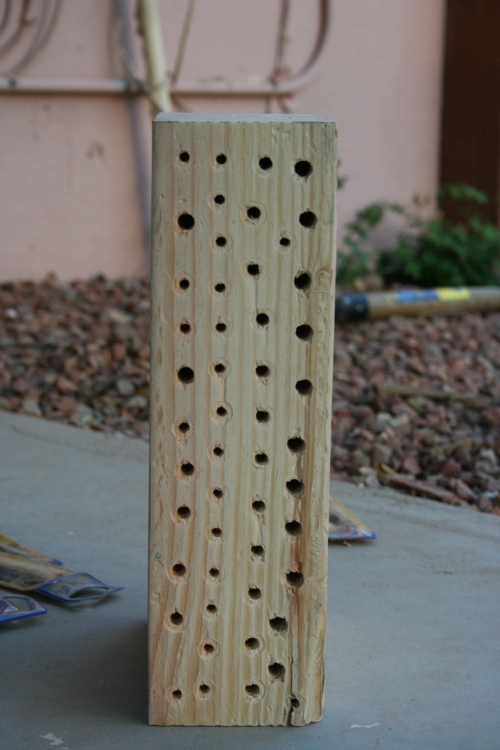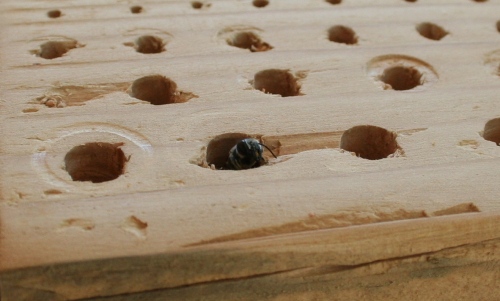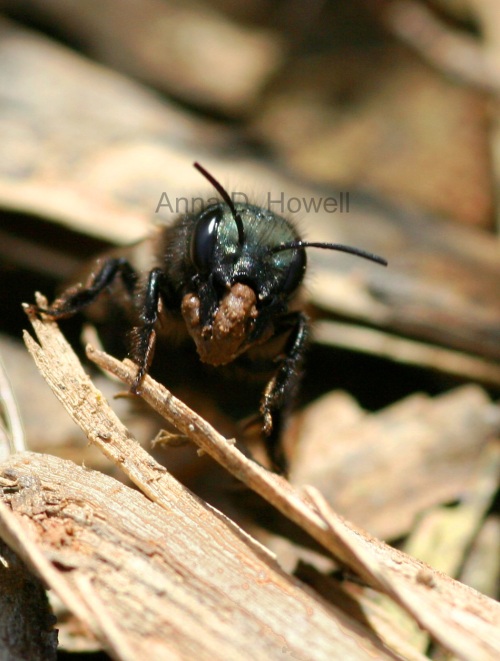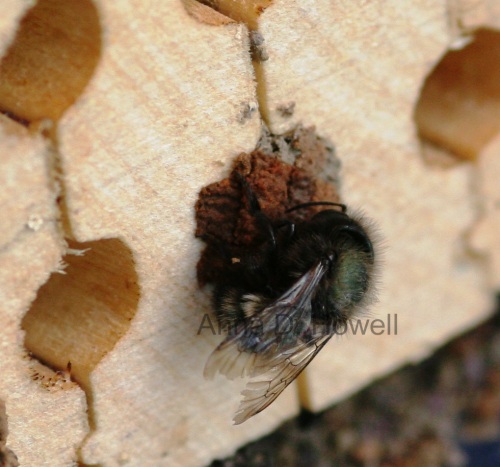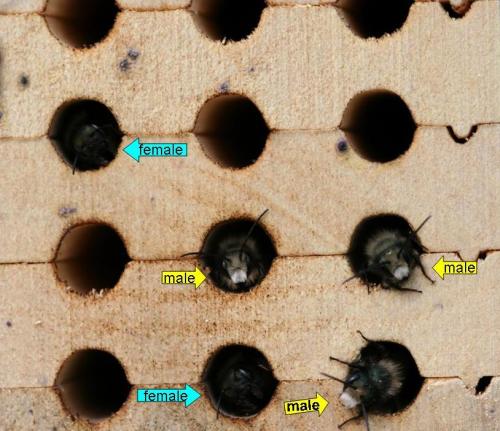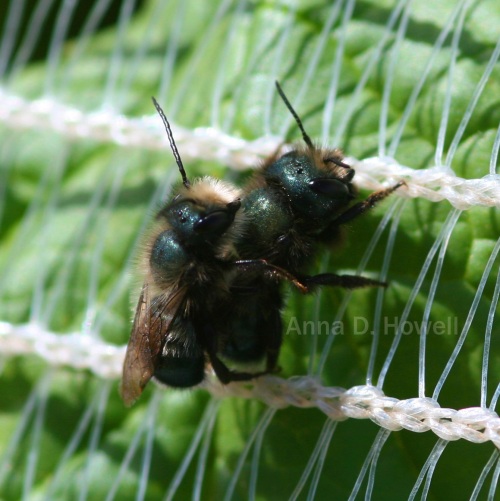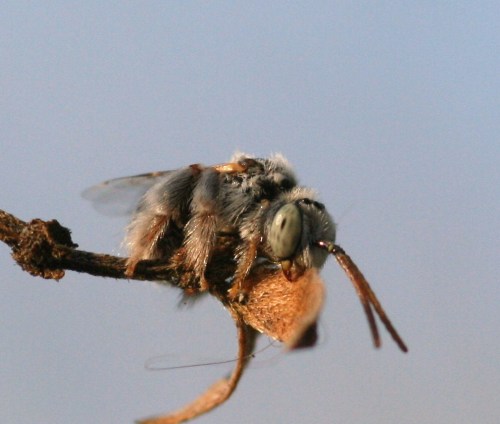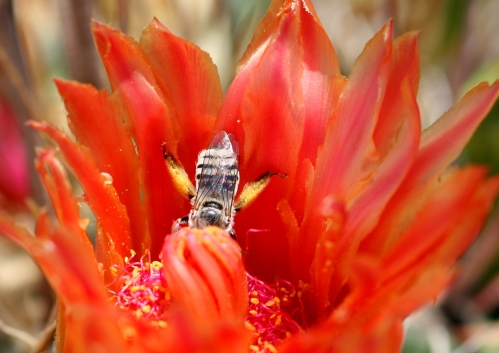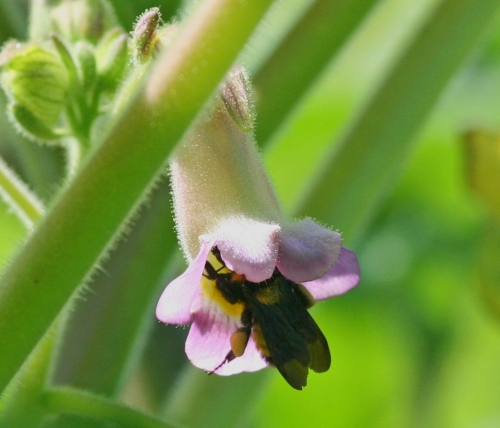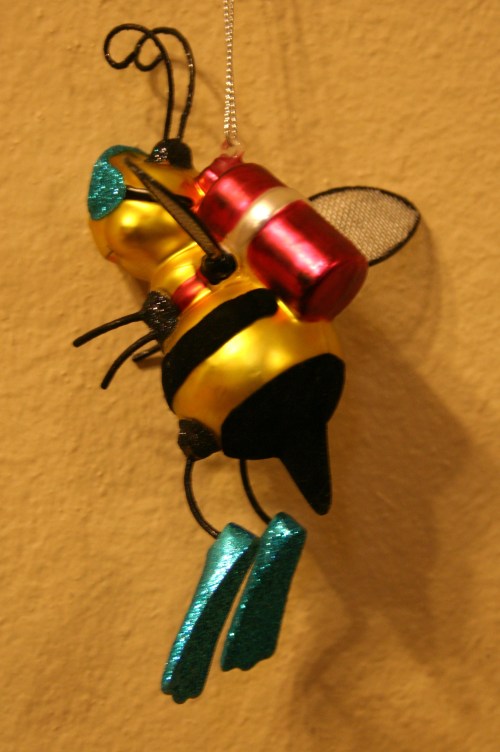Well bee fanatics, I am back online! I also have a few photos to post, so there will be more posts. It has been too long of a break and I have to say…I miss writing about bees. I miss going out to take photos of them. Well, I miss everything about them. So, here it goes.
In May I went up to Kern County, CA to visit a friend who is currently working with one of the biggest Almond factories. His job? To start using native bees for almond pollination. His setup? It’s a secret. I don’t want the almond people to hate me, so I do have to keep that a secret. But, I can say that it is AMAZING!!!! When R and I pulled into the orchard my jaw dropped. My friend is working with a particular bee. Osmia lignaria, a.k.a. orchard mason bee or blue orchard bee (BOB).
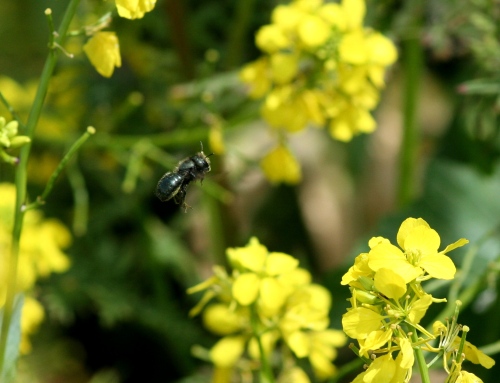
Osmia lignaria
Aren’t they beautiful? These bees are cavity nesting bees, so they nest in above ground pre-made cavities(holes). This bee can be trap-nested in artificial nests, so you can start building a community of bees. This is what the orchards here in California’s central valley are trying to do. To help ease the work of honeybees (and costs), they are trying to raise hundreds of thousands of these little Osmia bees to pollinate their orchards. It’s a HUGE orchard, so thousands upon thousands of bees are needed to do the job.
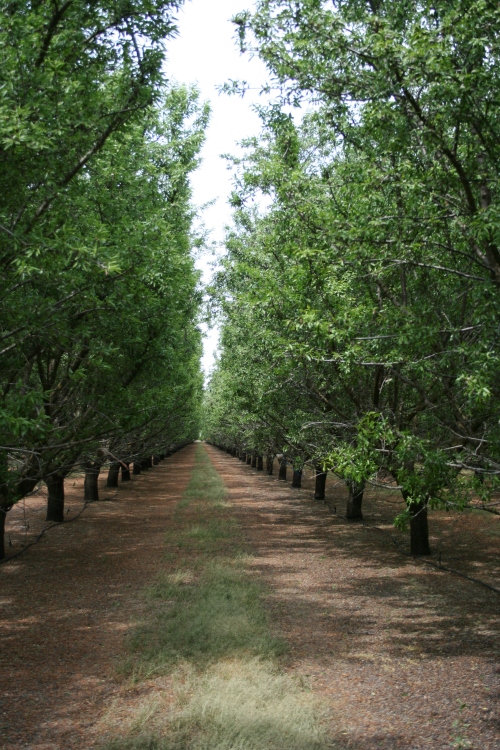
Photo by Ruben Alarcon
When we were visiting the orchard, I was around over 350,000 of these bees. Some would land on my pants, my arm, and others just flew by me. Not a single sting or act of aggression from these ladies. Although this species of bee can sting, they only will if they feel threatened, i.e. if you grab them. But hey, if someone grabbed you wouldn’t you fight back and try to get away? They only use it when they have to.
These bees are very efficient pollinators. Even more so than honeybees. They are efficient because they tend to make numerous trips in order to gather enough pollen to feed their offspring (larvae). Because they make numerous trips, and because they have hairy little bodies, lots more pollen gets rubbed onto their body and they visit more flowers to gather pollen, and drop off more pollen.
So you may be wondering why orchards have not been using them instead of honeybees. Well, in other countries like Spain and Japan they do use them. The problem in the US is the size of the orchards and when they begin blooming. This orchard that I visited is the largest almond and pistachio orchard in California. I am talking about 50,000 plus acres (from that company alone!). That’s a lot of trees, which means a lot more flowers that need to be pollinated. These native bees do not have hives and they are seasonal. So getting the bees up in the numbers and to emerge exactly when the trees bloom is very tricky. Since the bees are only live 4-6 weeks, you have to be very careful not to have them emerge too early or else they will not be alive for the entire or peak bloom, but if they emerge too late they can miss peak bloom. There lies the conundrum.
